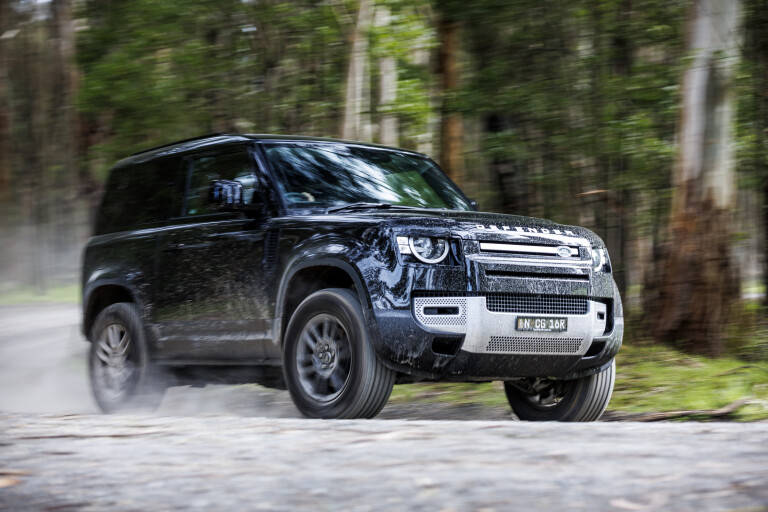
Things we like
- Stylish looks
- Real 4x4 performance in a smaller car
- High level of equipment
Not so much
- Limited cargo space because of rear seat
- Rear seat doesn’t fold forward or flat
- Relatively expensive price
Land Rover Australia has consolidated its Defender 90 line-up for the MY23 range with just six variants available and only one of them being diesel fuelled – the D250 in S specification and we're driving it here to reacquaint ourselves with the stubby Defender.
The D250 S starts at $95,590, but the test car is fitted with a few extras that take the price as tested up to $106,263 plus on-road costs. The extras include the Off Road Pack at $1021, the Air Suspension Pack at $1309, the Cold Climate Pack at $1481, a tow bar for $1342, and a few smaller comfort and convenience features.
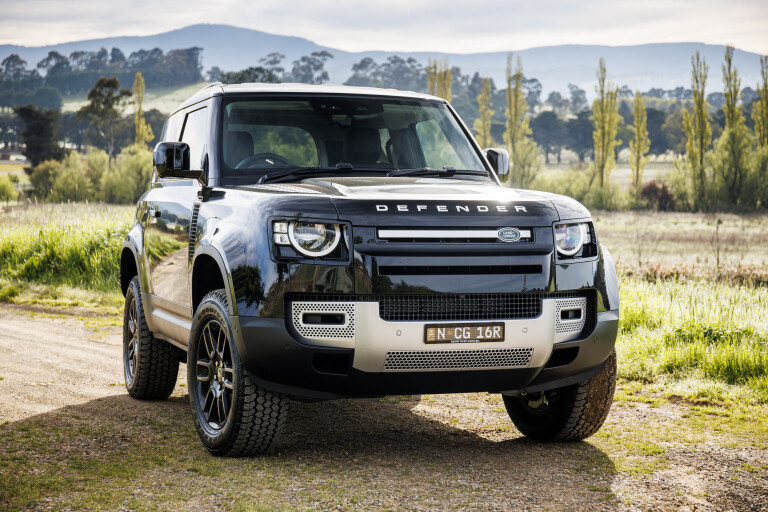
From those extras, we’d say the air suspension and the off-road packs are the only essentials for bush touring in Australia, although you could forego the Off Road Pack and simply option in the torque-vectoring, auto-locking rear differential for just $806 and you’d just be losing the black roof rails and 220V power socket in the cargo space.
Standard features on the D250 S include full-time 4x4 with a dual-range transfer case, coil-sprung suspension and the 3.0-litre, inline six-cylinder diesel engine backed by an eight-speed automatic transmission.
The list of standard safety features is long and includes dynamic stability control, electronic traction control, roll stability control, cornering brake control, hill descent control, adaptive cruise control, trailer sway control, rear traffic monitor, lane keep assist and warning, tyre pressure monitoring system, brake hold and emergency brake assist, anti-lock brakes and electronic brakeforce distribution.
Pricing
| Defender 90 P300 | $80,540 |
|---|---|
| Defender 90 S P300 | $88,470 |
| Defender 90 S D250 | $95,590 |
| Defender 90 Se P400 | $105,690 |
| Defender 90 X P400 | $145,700 |
| Defender 90 V8 P525 | $215,480 |
Powertrain
Land Rover’s ‘Ingenium’ inline-six engines are available in D250 and D300 specification across the brand’s portfolio, but only the D250 is offered in the 90. In this model, it makes 183kW of power and 570Nm of torque, plenty to punch the little Defender along at a sprightly clip on the highway or over backroads.
The twin-turbocharged diesel engine mates exceptionally well with the eight-speed transmission and well-controlled air suspension to deliver a rewarding driving experience when you want to push on, yet is equally relaxed when cruising.
Land Rover quotes the fuel usage for the D250 at 7.9L/100km combined, while we returned 9.7L/100 during our test.
The engine features what Land Rover calls a 48-volt mild hybrid system to keep its battery charged and aid the stop/start functionality, but it doesn’t propel the vehicle at all. The only indication that a driver has of its existence is the added deceleration felt when you lift off the throttle and the starter-generator is recharging the system.

Interior
The 90 might be the shorty three-door version of the Defender range but it still offers seating for five and there’s a surprising amount of space for rear-seat passengers. The front doors are longer than those on the larger, five-door 110 Defender and the front seats tilt and slide forward to give access to the back.
It’s still an awkward squeeze for adults to clamber back there but once in the back seat, there’s plenty of legroom and headroom for two passengers. Three would be a bit of a pinch.
Standard equipment includes leather seats that are heated and partially power-adjustable in the front, a new bigger 11.4-inch touchscreen that includes satellite navigation and wireless Apple CarPlay and Android Auto, a wireless charger for compatible mobile phones, manual adjustment for height and reach on the steering column, dual-zone climate control, and USB as well as ciggie-type 12-volt power outlets. This car has optional three-zone climate control fitted, which adds rear HVAC controls to give back-seat passengers individual temperature management.
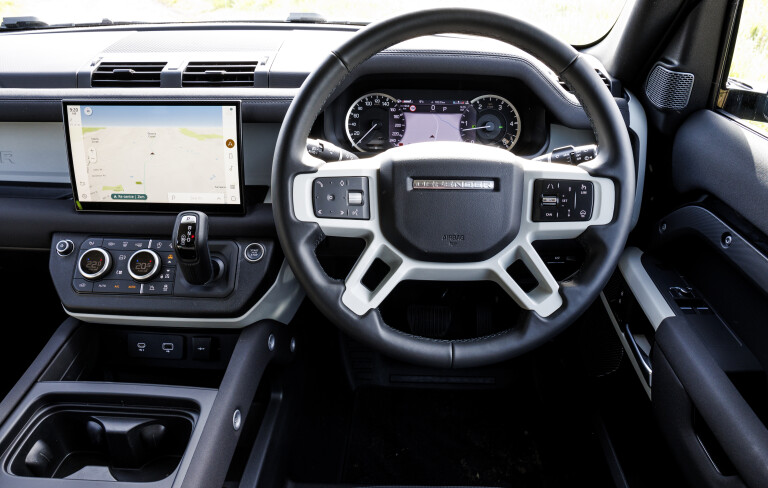
The downside of the abundant rear passenger space is a lack of space behind the back seat. It is small and the rear seats don’t fold flat to offer the most available space for cargo. There is a 12V power outlet (and the optional 220V power outlet) in the boot plus cargo tie-down points.
I feel that this rear seat is the biggest letdown of the Defender 90. Let’s face it, you wouldn’t buy the three-door model for a family vehicle and that rear seat would be used intermittently at most. What buyers of this Land Rover would better appreciate is space for their adventure gear, luggage, bicycles and so on, and the rear seat in this car really restricts that.
The commercial-grade Defender 90 Hardtop that is available in some markets does appear to have a flat rear floor with no rear seats but, along with the 110 Hardtop, it is still under consideration for Australia and yet to be confirmed.
Off-road
It wouldn’t be a Land Rover Defender if it didn’t have good off-road chops and while these new models don’t have the live axles of classic Landies, they don’t fall back when off-road and do it in a lot more comfort.
The low-range gearing is deep, providing ample control and drive when going up steep, rutted climbs and handy engine braking on descents. The independent suspension does pick up front wheels easily but the calibration of the electronic traction control is fast and responsive to get the drive to the wheels that can use it best. The electronic torque-vectoring rear differential helps here too.
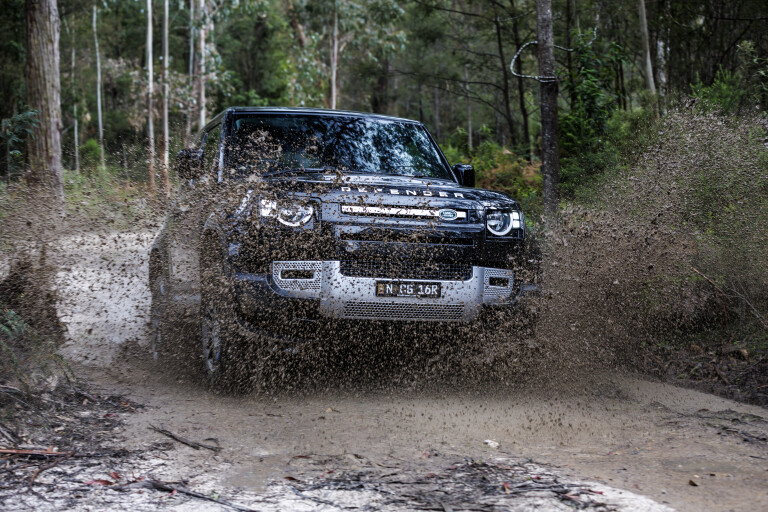
Land Rover’s All Terrain Progress Control is not standard on the S variant but you can add it as part of an optional package. This is like low-speed cruise control for off-road driving; its ability to get the car over gnarly terrain and soft sand is amazing.
Terrain Response is standard on the D250 S and it offers optimised chassis control systems for different road conditions such as sand, mud/ruts and snow. Terrain Response 2 and programmable Terrain Response are available within option packages.
Like all Land Rovers, visibility from the driver’s seat around the Defender 90 is excellent and the driver is aided by 360-degree cameras including a forward-facing camera.
Practicalities
While there is a huge list of factory options and packages for the Defender, the number of off-road accessories is limited. The models are not well-supported by the aftermarket either and choices for touring items like a bullbar are restricted.
But as the model gets older, the range on offer is expanding from global suppliers if you look hard enough. There’s certainly enough kit around to turn the 90 into a wicked little touring 4x4.
Sorting out the rear seat to maximise the cargo capacity is the real limit to the practicality of the little Landy. Replacing the rear seat with a flat floor would be the best solution.
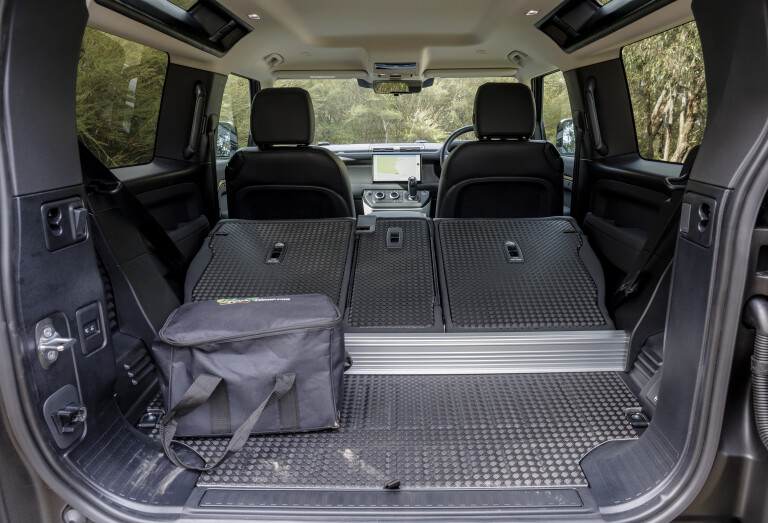
The standard tyre size is 255/65 R19 but you can fit an 18-inch wheel to Defender S models. That should allow a decent 275/70 tyre to fit and be better for off-road use. You can fit 18-inch wheels to the D250 S in either alloy or steel as a no-cost option. There is a massive range of alloy wheel options offered on the Defender 90, right up to ludicrous 22-inch diameter rollers.
With the air suspension raised to its off-road height, you get plenty of ground clearance although the ride does become a bit choppy with it up there. Still, it’s not unbearable and I found myself driving it raised all the time.
The Defender has front and rear recovery points, although the front one is hidden behind a panel that you need to remove before heading off-road so you can access it if and when you need it.
VERDICT
The Defender 90 is a super cool-looking wagon and its smaller size – we couldn’t call it compact – makes it easier to fit in tight spots be they street parking in the suburbs or negotiating tight bush tracks.
The second-row seat is surprisingly usable but a bit awkward to access and not a space where you’d want to be putting passengers every day. The biggest gripe with the rear seat, and the car as a whole, is that it takes up a lot of room in a vehicle with limited space. For some users, myself included, that space would be better utilised for cargo or luggage and not passengers.
At around $100K, depending on what options you chose, the Defender is not a cheap car either and you’re not actually saving much when compared to the more practical Defender 110 five-door.
The bigger wagon might be still cool looking but nowhere near as stylish as the 90. How much are you prepared to sacrifice for style over substance?
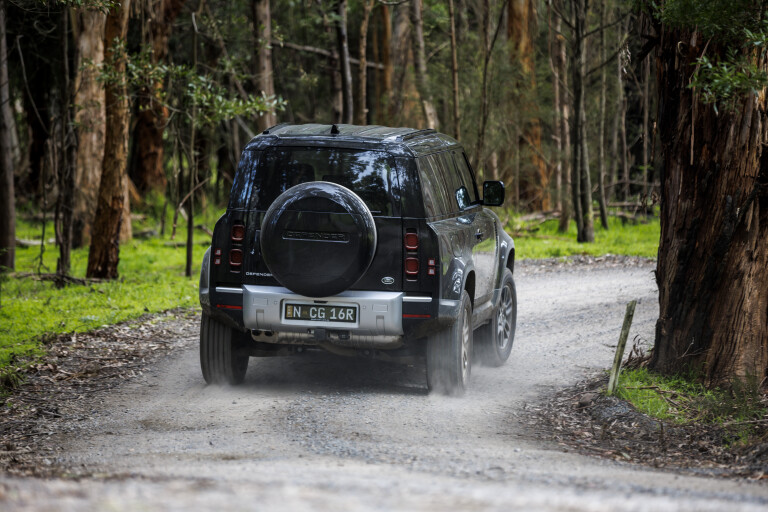
2022 Land Rover Defender 90 D250 S specs
| 4x4 System | full-time, dual-range |
|---|---|
| Crawl Ratio | 53.34:1 |
| Construction | 3-door monocoque wagon |
| Front Suspension | height-adjustable air |
| Rear Suspension | height-adjustable air |
| Tyres/Wheels | 255/65 R19 / alloy |
| Weight | 2303kg |
| GVM | 2970kg |
| GCM | 6470kg |
| Towing Capacity | 3500kg |
| Payload | 667kg |
| Seats | 5 |
| Fuel Tank | 89L |
| Fuel Consumption (ADR) | 7.9L/100km |
| Fuel Consumption (tested) | 9.7L/100km |
| Approach Angle | 37.5° |
| Rampover Angle | 30.7° |
| Departure Angle | 40.0° |
| Ground Clearance | 290mm (raised) |
| Wading Depth | 900mm (raised) |
Pricing
| Defender 90 P300 | $80,540 |
|---|---|
| Defender 90 S P300 | $88,470 |
| Defender 90 S D250 | $95,590 |
| Defender 90 Se P400 | $105,690 |
| Defender 90 X P400 | $145,700 |
| Defender 90 V8 P525 | $215,480 |
All prices before on-road costs
The Wheels take
Things we like
- Stylish looks
- Real 4x4 performance in a smaller car
- High level of equipment
Not so much
- Limited cargo space because of rear seat
- Rear seat doesn’t fold forward or flat
- Relatively expensive price



COMMENTS